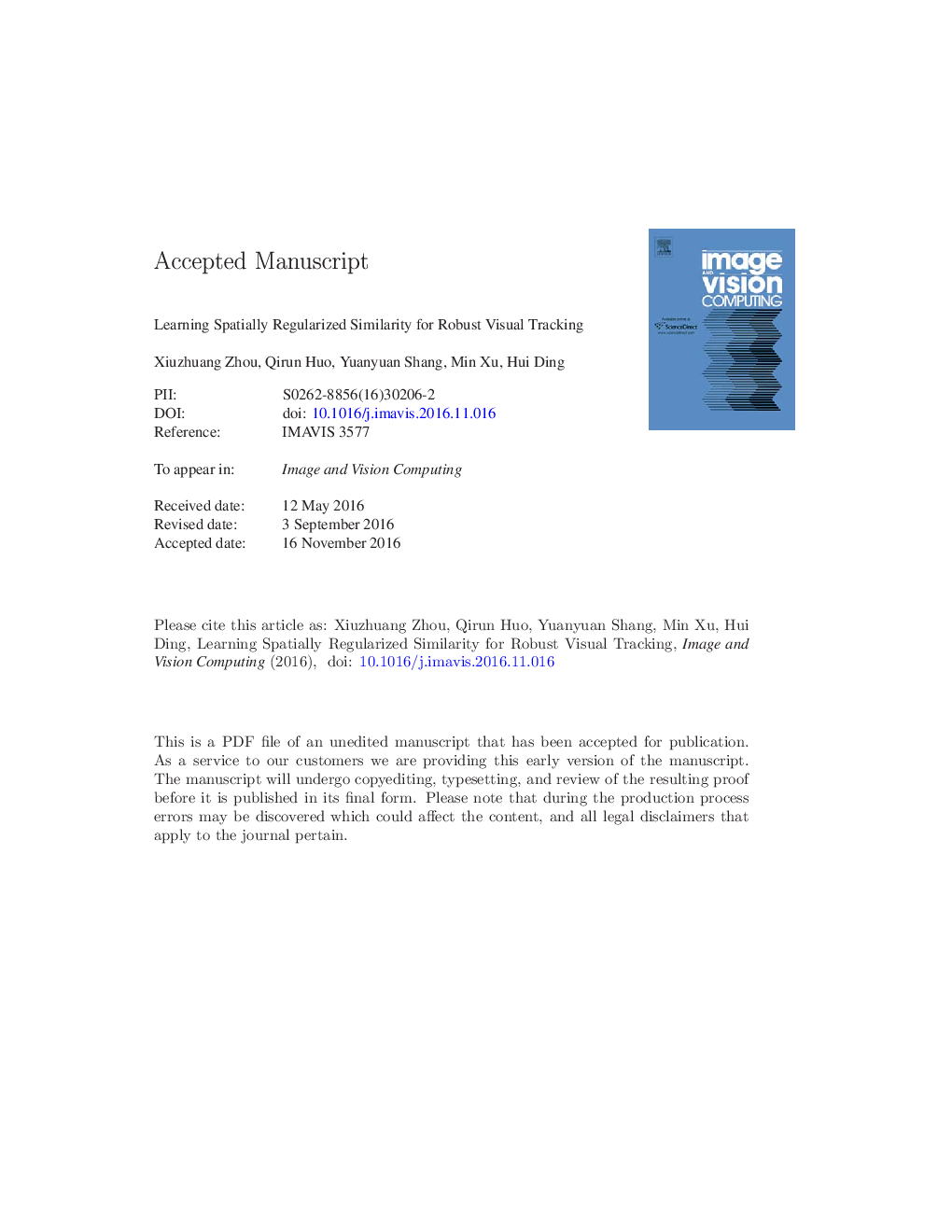| Article ID | Journal | Published Year | Pages | File Type |
|---|---|---|---|---|
| 4968927 | Image and Vision Computing | 2017 | 28 Pages |
Abstract
Matching visual appearances of the target object over consecutive frames is a critical step in visual tracking. The accuracy performance of a practical tracking system highly depends on the similarity metric used for visual matching. Recent attempts to integrate discriminative metric learned by sequential visual data (instead of a predefined metric) in visual tracking have demonstrated more robust and accurate results. However, a global similarity metric is often suboptimal for visual matching when the target object experiences large appearance variation or occlusion. To address this issue, we propose in this paper a spatially weighted similarity fusion (SWSF) method for robust visual tracking. In our SWSF, a part-based model is employed as the object representation, and the local similarity metric and spatially regularized weights are jointly learned in a coherent process, such that the total matching accuracy between visual target and candidates can be effectively enhanced. Empirically, we evaluate our proposed tracker on various challenging sequences against several state-of-the-art methods, and the results demonstrate that our method can achieve competitive or better tracking performance in various challenging tracking scenarios.
Related Topics
Physical Sciences and Engineering
Computer Science
Computer Vision and Pattern Recognition
Authors
Xiuzhuang Zhou, Qirun Huo, Yuanyuan Shang, Min Xu, Hui Ding,
